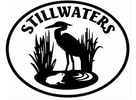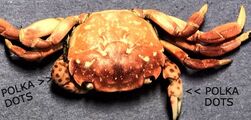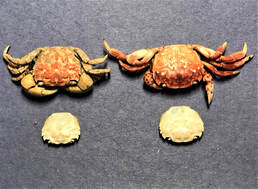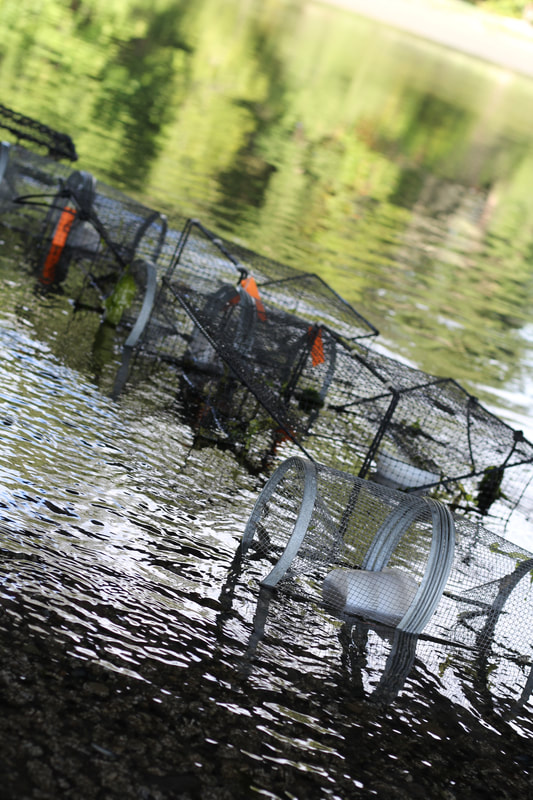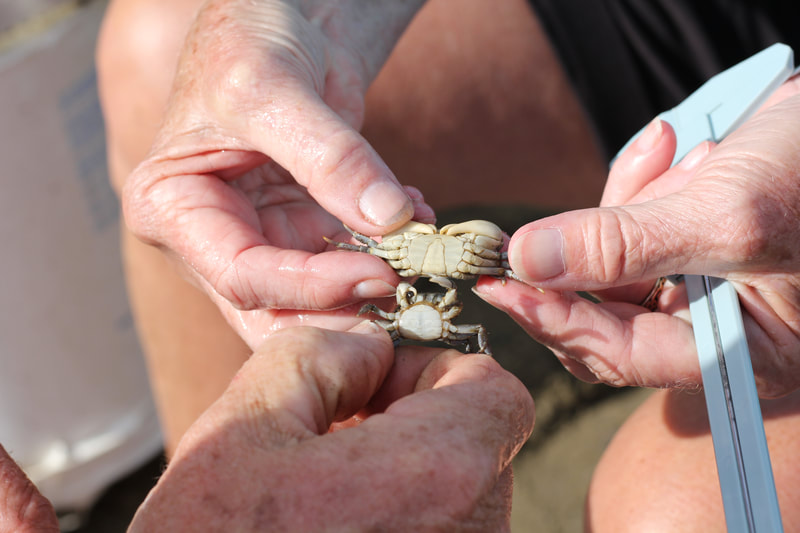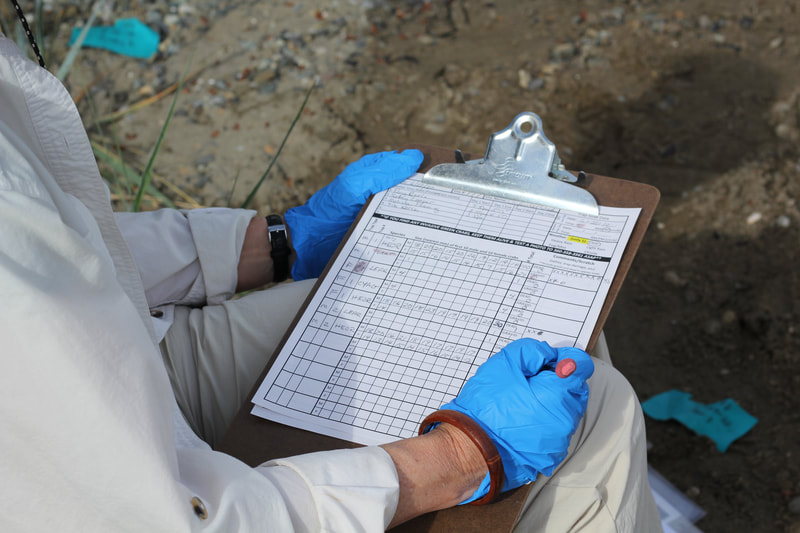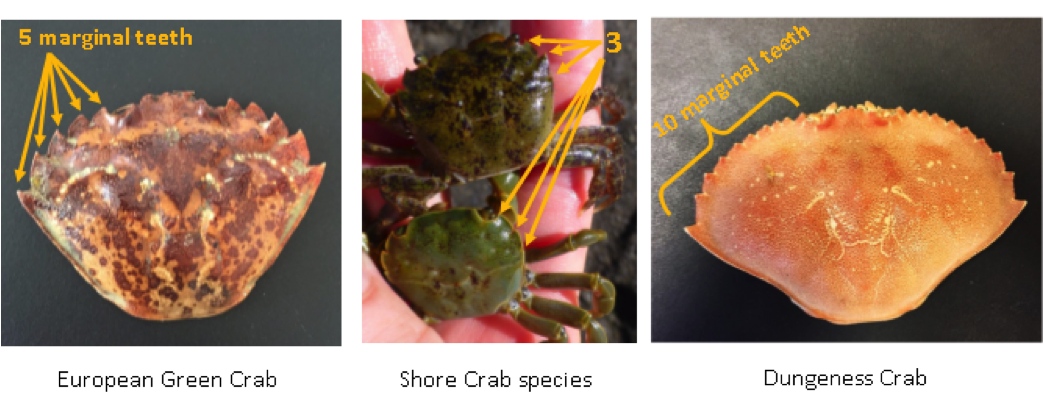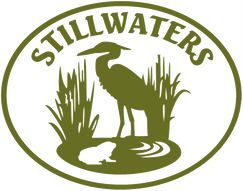Shore crabs of Arness Park and Slough
|
Please keep an eye out for these crabs both in the water and as molts (cast-off shells) on the beach. They can be most easily distinguished from our native crabs by the number of ‘marginal teeth’ behind each eye: five on each side, compared to only three on the shore crabs common on local beaches and ten on the ever popular Dungeness Crab. Notify Melissa by emailing her or follow the directions for reporting a sighting on the Crab Team website.
|
How you can help! |
